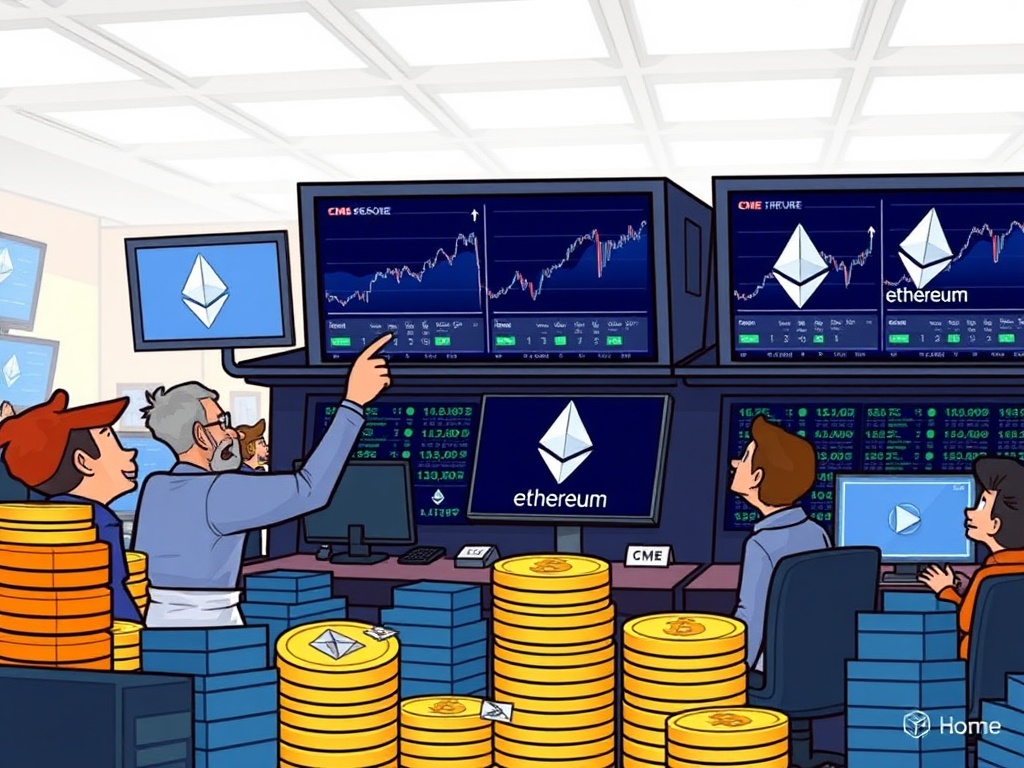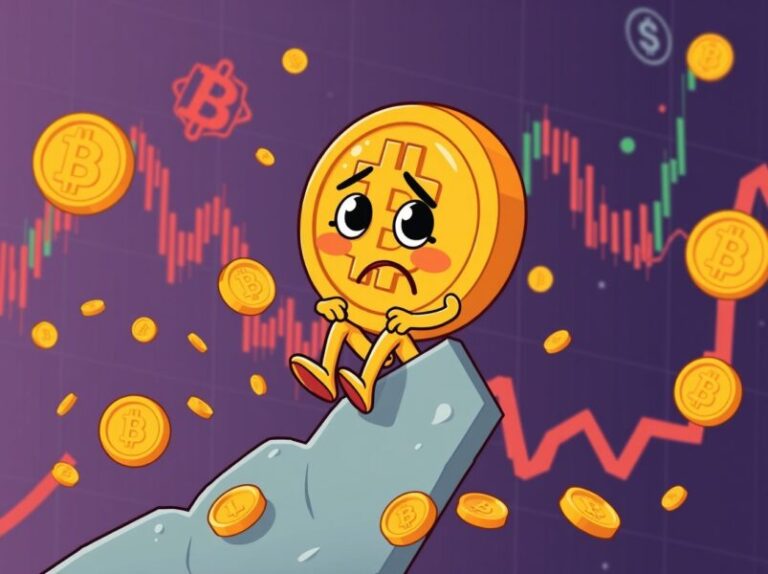BitcoinWorld CME Ethereum Futures See Explosive $118B Volume Surge in July The cryptocurrency world is buzzing with incredible news! In July, CME Ethereum futures experienced an absolutely explosive surge, with trading volume hitting a staggering record of $118 billion. This remarkable milestone, reported by The Block, highlights a significant shift in how institutional investors are …
CME Ethereum Futures See Explosive $118B Volume Surge in July

BitcoinWorld

CME Ethereum Futures See Explosive $118B Volume Surge in July
The cryptocurrency world is buzzing with incredible news! In July, CME Ethereum futures experienced an absolutely explosive surge, with trading volume hitting a staggering record of $118 billion. This remarkable milestone, reported by The Block, highlights a significant shift in how institutional investors are engaging with the second-largest cryptocurrency. It’s not just about the raw numbers; this massive jump signals growing confidence and strategic interest in Ethereum derivatives.
Understanding the Unprecedented CME Trading Volume
July was a monumental month for ETH futures trading on the Chicago Mercantile Exchange (CME). The $118 billion in trading volume represents an astounding 82% increase from the previous month. This isn’t just a slight bump; it’s a clear indication of intensified activity and liquidity flowing into the regulated Ethereum market.
Furthermore, Open Interest (OI) in CME ETH futures also reached an all-time high. It climbed an impressive 75% within the same period, soaring from $2.97 billion to $5.21 billion. Open Interest signifies the total number of outstanding derivative contracts that have not yet been settled. A rising OI, alongside soaring volume, suggests new money entering the market and strong conviction among participants.
Why Institutions Are Embracing Ethereum Derivatives
The CME is a highly regulated exchange, making it a preferred venue for institutional investors. This record-breaking activity in CME Ethereum futures points to a growing comfort level among large financial players. They are increasingly looking to gain exposure to Ethereum without directly holding the underlying asset.
What drives this institutional appetite? For many, regulated Ethereum derivatives offer a sophisticated way to manage risk or speculate on price movements. It allows them to hedge existing crypto portfolios, capitalize on volatility, or simply diversify their investment strategies within a familiar, regulated framework. This growing institutional participation adds legitimacy and stability to the broader crypto ecosystem.
The Appeal of ETH Futures Trading
Why are traders, both institutional and sophisticated retail, flocking to ETH futures trading? There are several compelling reasons:
- Leverage Opportunities: Futures contracts allow traders to control a large position with a relatively small amount of capital. This amplifies potential returns, though it also magnifies risks.
- Hedging Capabilities: Investors holding spot ETH can use futures to protect against potential price declines, effectively “locking in” a value for a future date.
- Price Discovery: High trading volumes contribute to more efficient price discovery, as a wider range of participants contribute to market consensus.
- Regulatory Clarity: Trading on the CME provides a regulated environment, which offers greater security and transparency compared to some unregulated exchanges.
This robust activity also reflects broader market sentiment around Ethereum, especially with ongoing network upgrades and its central role in decentralized finance (DeFi) and NFTs.
Navigating the Dynamics of CME Trading Volume
While the surge in CME trading volume for Ethereum futures is exciting, it’s crucial to understand the dynamics involved. High volume indicates liquidity and interest, but futures markets also come with inherent complexities and risks. Volatility can be extreme, and leveraged positions can lead to rapid losses if not managed carefully.
For participants, understanding the intricacies of futures contracts, margin requirements, and market sentiment is paramount. This record-breaking activity underscores Ethereum’s growing importance as a financial asset, attracting serious capital and sophisticated strategies to its derivatives market. It’s a testament to Ethereum’s evolving role in the global financial landscape.
A Bright Future for Ethereum’s Derivatives Market
The unprecedented surge in CME Ethereum futures trading volume and Open Interest in July paints a clear picture: institutional adoption of Ethereum is not just a buzzword; it’s a tangible reality. This monumental activity on a regulated exchange like the CME reinforces Ethereum’s position as a critical asset in the digital economy.
This growing interest in Ethereum derivatives suggests a maturing market where sophisticated financial instruments are increasingly used. As the crypto space continues to evolve, the integration of digital assets into traditional finance will likely accelerate, with CME Ethereum futures playing a pivotal role in this exciting transformation.
Frequently Asked Questions (FAQs)
Q1: What are CME Ethereum futures?
A1: CME Ethereum futures are standardized, cash-settled contracts traded on the Chicago Mercantile Exchange that allow investors to speculate on the future price of Ethereum without owning the actual cryptocurrency. They are regulated financial instruments.
Q2: What does Open Interest (OI) mean in the context of futures trading?
A2: Open Interest (OI) represents the total number of outstanding derivative contracts, such as futures, that have not yet been settled or closed. A rising OI indicates new money flowing into the market and increasing participation.
Q3: Why are institutions increasingly interested in ETH futures trading?
A3: Institutions are drawn to ETH futures trading on regulated exchanges like the CME for several reasons, including the ability to hedge existing crypto holdings, speculate on price movements with leverage, and access a transparent, regulated environment for exposure to Ethereum derivatives.
Q4: How does high CME trading volume impact the broader crypto market?
A4: High CME trading volume signifies increased liquidity and institutional interest, which can enhance price discovery, add legitimacy to the asset, and potentially attract more traditional financial participants to the crypto space, fostering market maturity.
Q5: What are the main risks associated with trading Ethereum derivatives?
A5: The main risks include market volatility, which can lead to rapid price swings, and the inherent risks of leverage, which can amplify both gains and losses. It is crucial for traders to understand contract specifications and manage their risk effectively.
If you found this article insightful, please consider sharing it with your network! Your support helps us continue providing valuable insights into the dynamic world of cryptocurrency. Share on social media and spread the knowledge!
To learn more about the latest Ethereum trends, explore our article on key developments shaping Ethereum institutional adoption.
This post CME Ethereum Futures See Explosive $118B Volume Surge in July first appeared on BitcoinWorld and is written by Editorial Team









